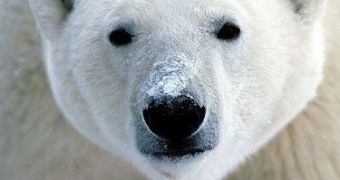Because of the global pollution, that triggers not only tons of waste floating in the oceans but also climate change, animals from the Arctic are at risk of contamination. A new report co-authored by a Norwegian researcher points out that polar bears and glaucous gulls are likely to be the first to show effects of these contaminants.
Pollutants and contaminants from industrialized countries are carried north by sea currents and end up in the Arctic. Researchers have noticed that the first harmful effects can be seen on polar bears in East Greenland and Svalbard and on glaucous gulls in Svalbard.
Strong evidence that PCBs and DDT were clearly affecting the animals within the Arctic could not be established but scientists say that because of the climate change, disease and the invasion of new species in the future, every animal's exposure to pollutants will be affected. One of the most influencing factors is climate change, as it will affect temperatures and sea ice distribution. This will only trigger changes in the food chain and in the animals' feeding habits, and researchers have made out a list with the animals at the highest risk of exposure to contaminants.
The fish and animals that are the most sensitive throughout the Arctic are: polar bears in East Greenland, Svalbard and Hudson Bay, many species of gulls and other seabirds from the Svalbard area, East Greenland, the Kara Sea, northern Norway and the Canadian central high Arctic, killer whales in Alaska and northern Norway, ringed seals in East Greenland and several populations of Greenland shark and Arctic char.
This report was published in a recent special issue of Science of the Total Environment and it is a part of the Arctic Monitoring and Assessment Program (AMAP), an effort to better understand the effects of pollution and global contamination on the wildlife from the Arctic.
The Norwegian researcher that took part at this study is Bjørn Munro Jenssen, a professor of biology at Norwegian University of Science and Technology. His work with polar bears in Svalbard was very useful for this summary, and it also appeared as a news story on the Australian Broadcasting Corporation's webpages.

 14 DAY TRIAL //
14 DAY TRIAL //